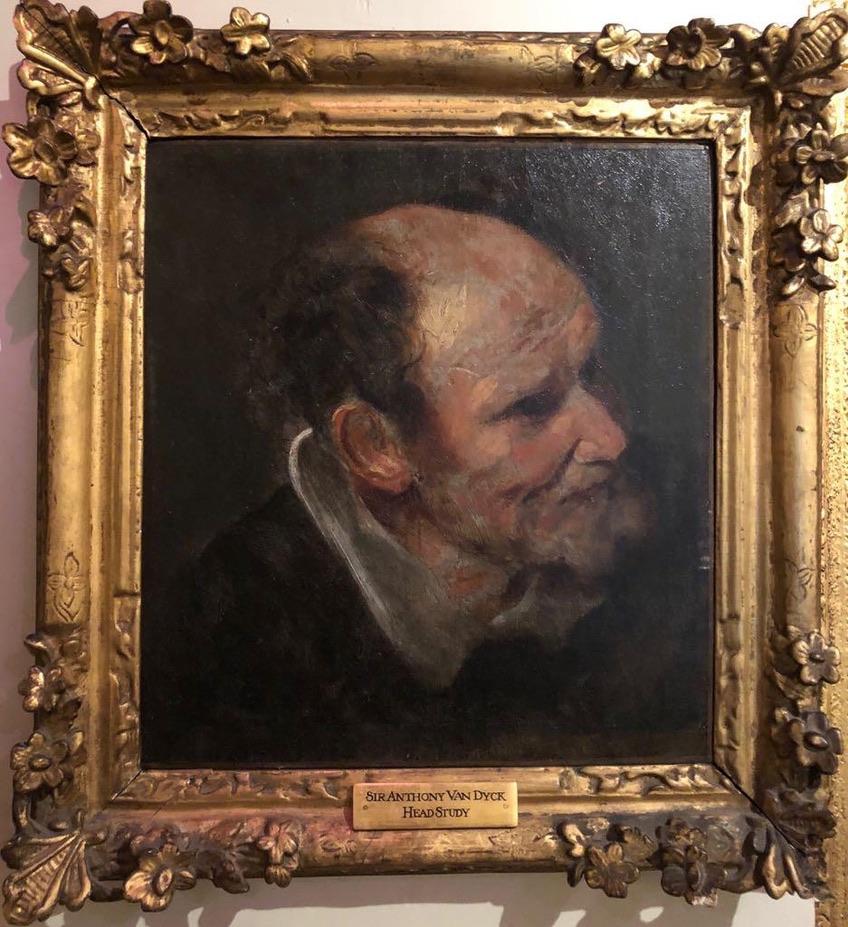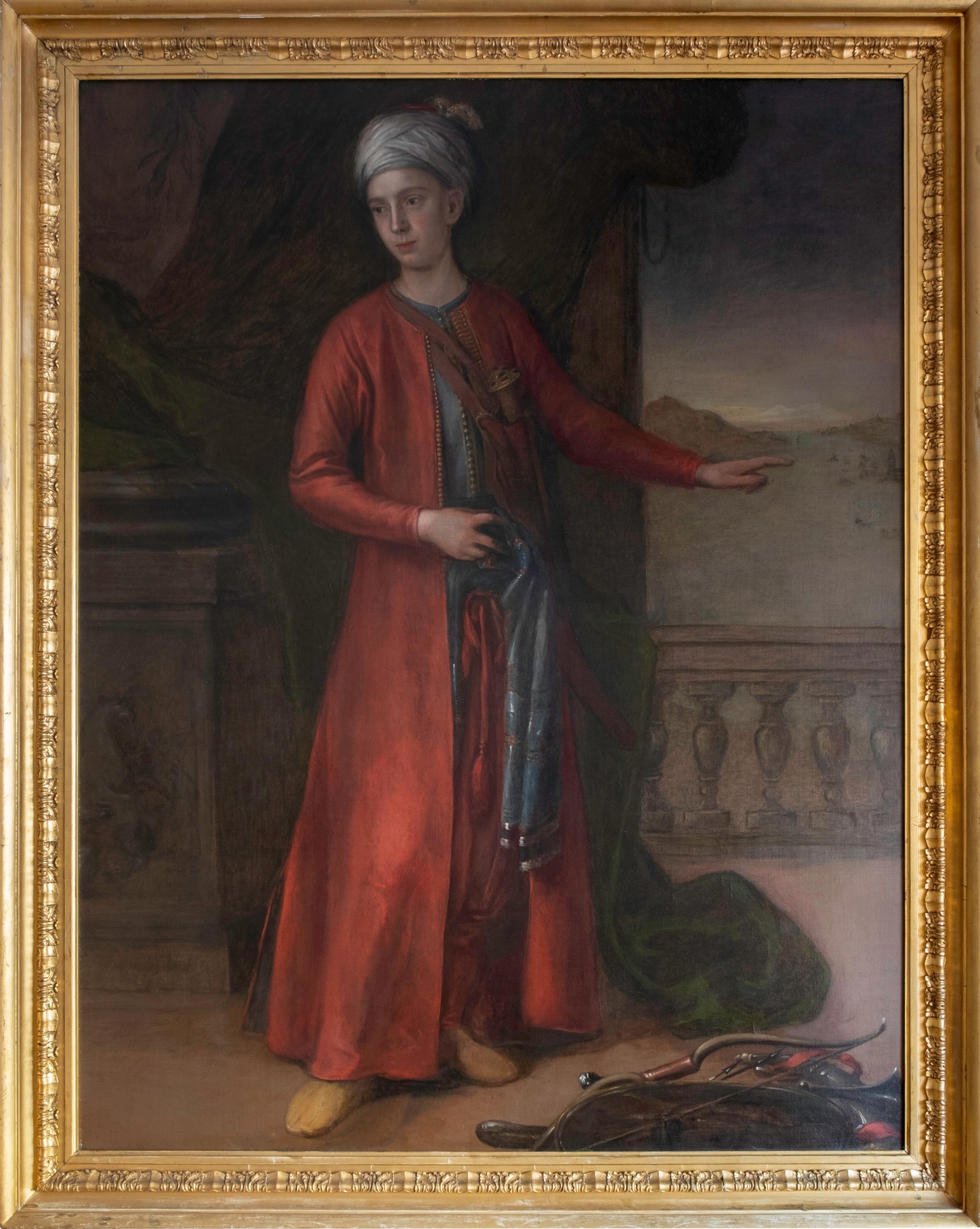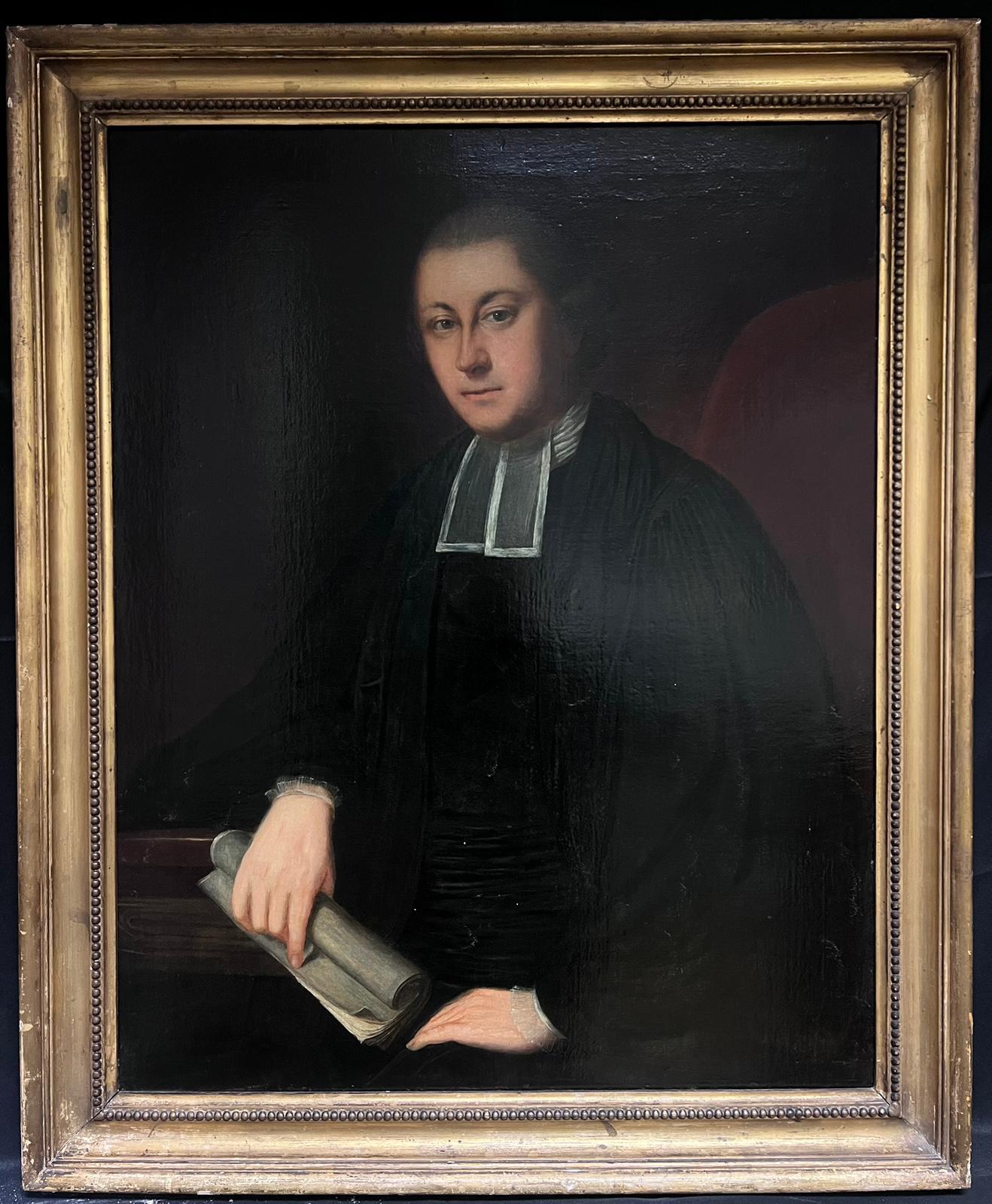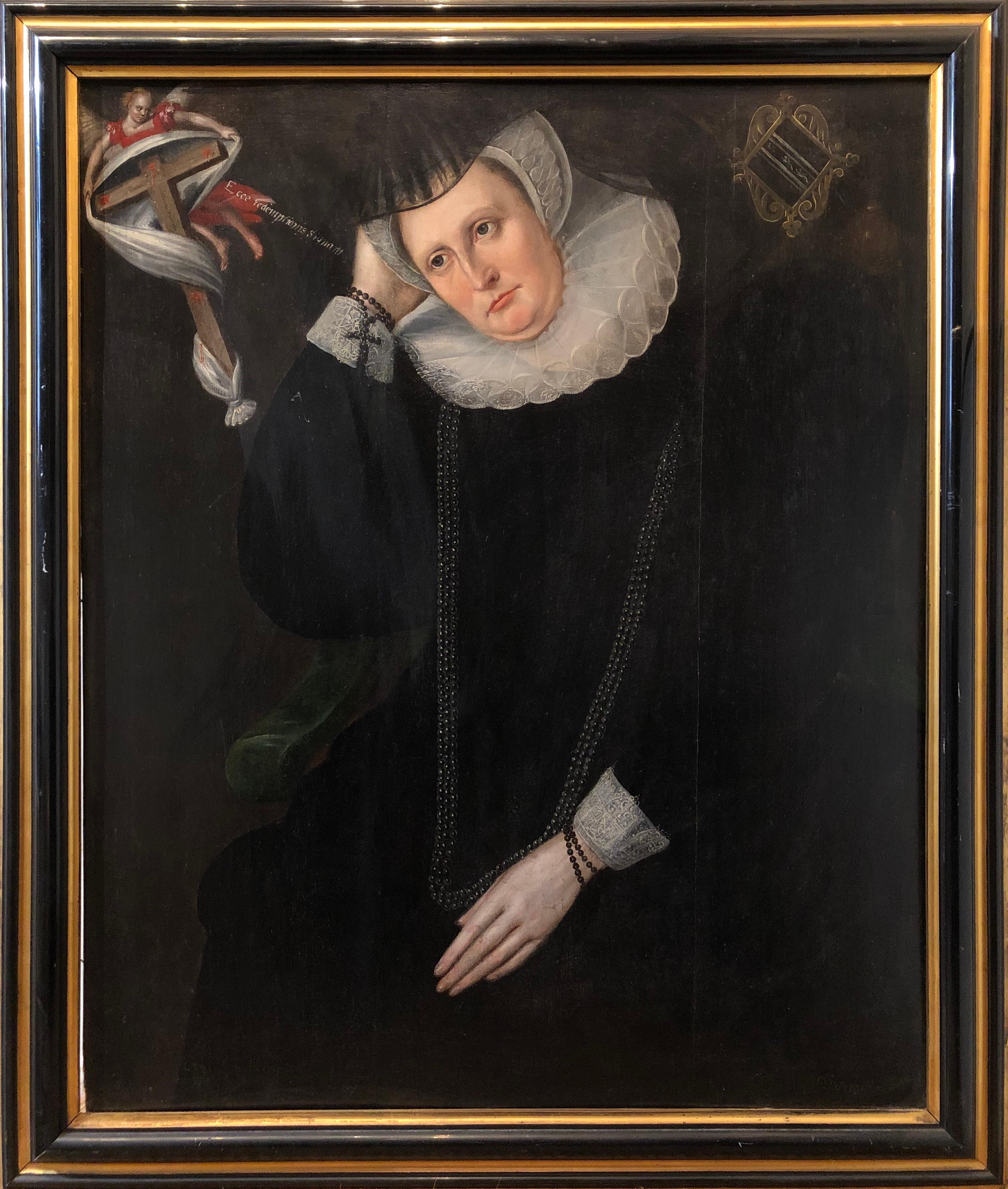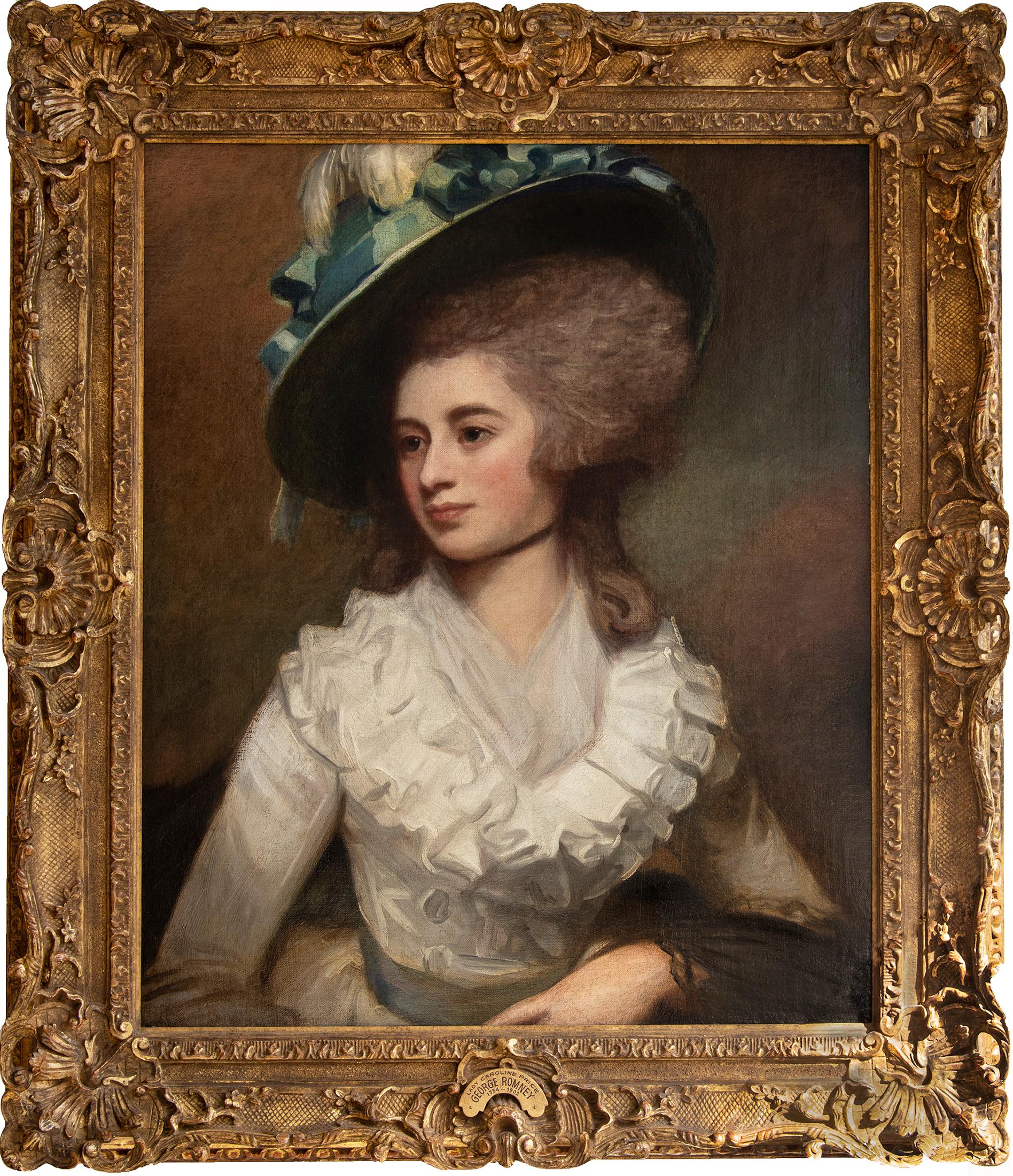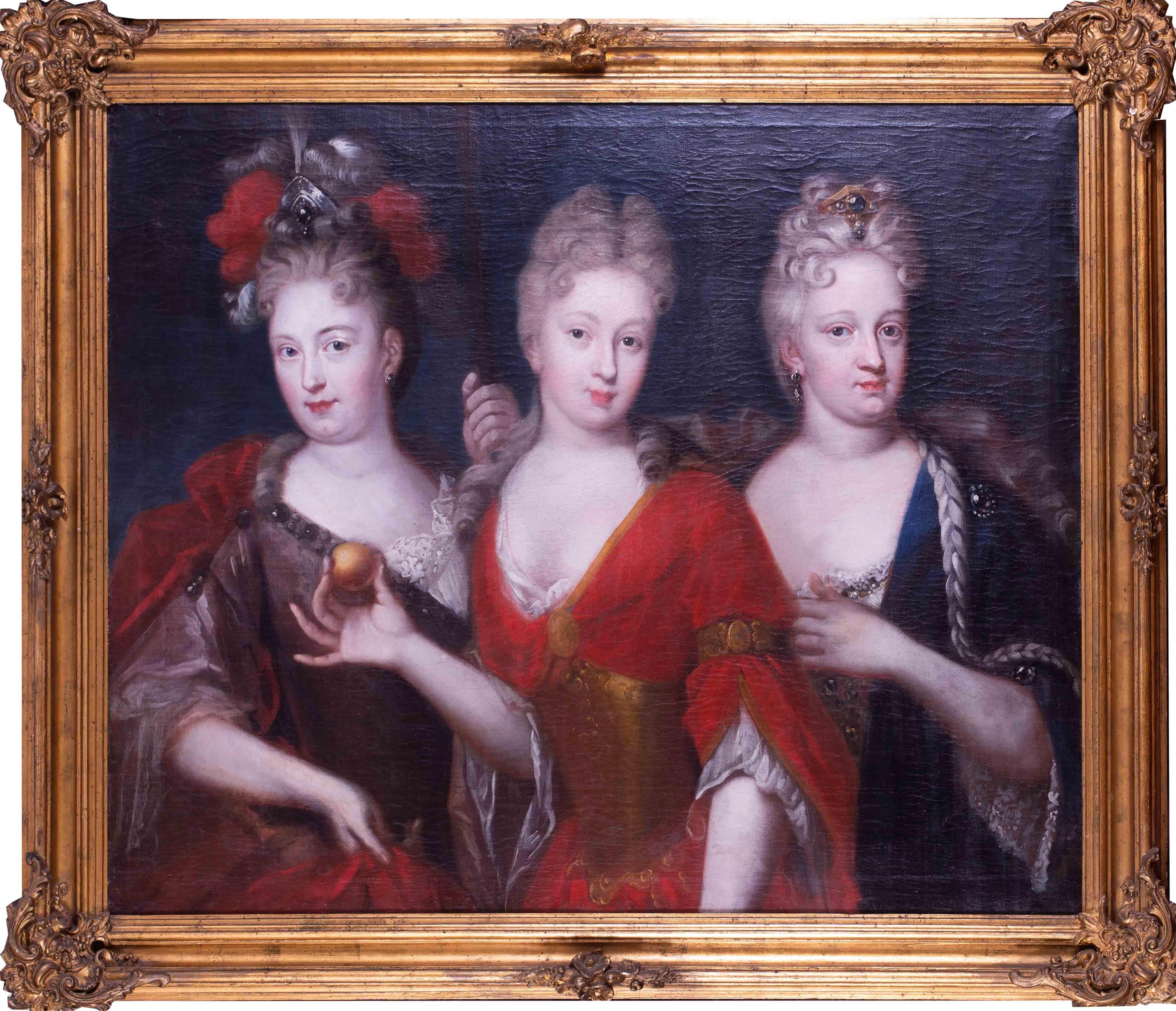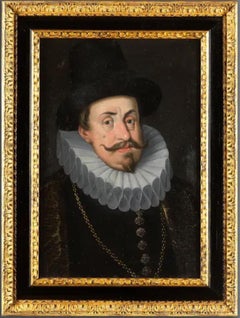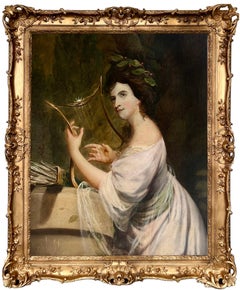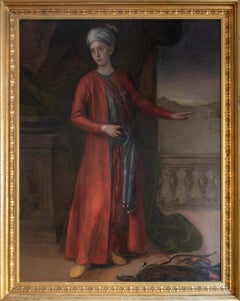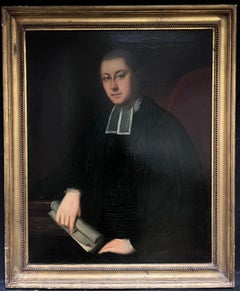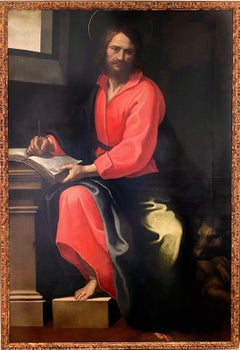
Huge Italian Old Master painting - Saint Luke Patron artists doctors Caravaggio
View Similar Items
Want more images or videos?
Request additional images or videos from the seller
1 of 11
Domenico Fiasella "Il Saranza"Huge Italian Old Master painting - Saint Luke Patron artists doctors Caravaggio
About the Item
- Creator:Domenico Fiasella "Il Saranza" (1589 - 1669, Italian)
- Dimensions:Height: 68.9 in (175 cm)Width: 44.49 in (113 cm)
- Medium:
- Movement & Style:
- Period:
- Condition:Recently cleaned by our restorer and ready to hang. The painting is in very good condition and beautifully preserved despite being over 400 years old.
- Gallery Location:Antwerp, BE
- Reference Number:1stDibs: LU142329225742
About the Seller
5.0
Platinum Seller
These expertly vetted sellers are 1stDibs' most experienced sellers and are rated highest by our customers.
Established in 2020
1stDibs seller since 2020
348 sales on 1stDibs
Typical response time: 1 hour
More From This SellerView All
- 17th century old master portrait of Emperor Rudolph IILocated in Antwerp, BE"Portrait of Emperor Rudolph of Austria (1557-1619)" circle or studio of Josef Heinz the Elder Emperor Rudolph II, born in 1552, was a visionary ruler whose reign as the Holy Roman ...Category
17th Century Old Masters Portrait Paintings
MaterialsCanvas, Oil
- 17th century Flemish old master painting - Adoration of the Shepherds ChristmasLocated in Antwerp, BE17th century Flemish Old master painting "Adoration of the Shepherds" by Victor Wolfvoet the Younger Surrounded by an elegant and broad black frame, i...Category
17th Century Old Masters Figurative Paintings
MaterialsCopper
- 18th century Portrait of a lady as Erato, the muse of poetry - Angelica KauffmanBy Angelica KauffmannLocated in Antwerp, BE18th century English school portrait of a lady, said to be Mrs. John Ruscombe of Colne, Lancaster, as the muse Erato This very skilfully painted portrait depicts a lady as the muse Erato, playing the Lyre. Her eyes are filled with emotion and her lips are curved in a soft, delightful smile. Hinting at the love song she is composing? Erato is one of the nine Muses in Greek mythology. She is the muse of lyric poetry, love poetry, and mimicry. Erato is often depicted holding a lyre, symbolizing her association with music and poetry. She inspires poets and writers to create works that celebrate love, beauty, and human emotions. Our painting was sold in the early 1900s as a work by Angelica Kauffman. Kauffman was an 18th-century Swiss Neoclassical painter who achieved significant success and recognition in a male-dominated art world. Born in Switzerland in 1741, she showed exceptional talent from a young age and received formal art training in Italy. Kauffman gained fame for her historical and mythological paintings, as well as her portraits, which were characterized by their grace, elegance, and classical influences. She was a founding member of the Royal Academy of Arts in London and enjoyed patronage from aristocrats and royalty throughout Europe. Kauffman's work contributed to the rise of Neoclassicism and she remains one of the most prominent female artists of her time. Measurements: Oil on canvas ca. 98 by 77cm and with the frame ca. 118 by 97 cm Provenance: Collection of Felix Gouled American Art Association, Anderson Galleries, by 1937 Kende Galleries at Gimbel Brothers, Jay Gould...Category
18th Century Old Masters Portrait Paintings
MaterialsCanvas, Oil
- Large 17th century Flemish old master painting - Diana and Callisto - RubensLocated in Antwerp, BE17th century Flemish Old master painting "Diana and Callisto" attributed to Victor Wolfvoet the Younger Our painting is based on Rubens' great work of...Category
17th Century Old Masters Figurative Paintings
MaterialsCopper
- 17th century Flemish Old master - Silenus feasting - Wine GodLocated in Antwerp, BE17th century old master painting "Silenus feasting", likely studio of Sir Anthony Van Dyck Born in Antwerp in 1599, Anthony Van Dyck entered the studio of Rubens (1577 - 1640) at the age of nineteen. Quickly, the master perceives the talents of the young prodigy and makes him his first assistant. Van Dyck, for his part, has a particular admiration for the man whose name is known throughout Europe. In 1619, he was inspired by a drunken Silenus by Rubens, produced one or two years earlier for a composition on the eponymous theme. This work, now in the Dresden Museum, appears to be the first version of our painting. That work has an illustrious provenance; it was recorded in the private collection of Leopold Wilhelm (Archduke of Austria) in 1662, in 1722 it was bought by the famous German painter Antoine Pesne for the King of Saxony in Dresden (Staatliche Kunstsammlungen Dresden - Gemäldegalerie Alte Meister, Dresden, inventory number 1017). From 1945 until 1955 it was on display at the Pushkin Museum in Moskou, after having been taken by Russia after the Second World War. It was then returned to the Staatliche Kunstsammlungen Dresden where it is still on display. Our painting is of a fine quality and has been painted by a skilled and confident hand. It displays some slight variations in the composition when compared to the original; the legs of Silenus are smoother and less hairy, more humanoid than satyresque. There might also be a pentimento visible at the level of the legs where one observes traces of hair on and under the material. This area can be compared to that of a canvas by Van Dyck kept in Brussels, of a still drunk Silenus whose animal legs are formally treated in the same way as the ones in our composition. Furthermore, the skirt of the figure to the far left has a purplish-red colour in our work, whereas in the first version it appears to be white. There also appear to be differences in the sky, firstly the clouds are shaped slightly different, the sky in our painting has a more vivid colour and there is also a golden hue of a sunset visible to the far left. This treatment of the background appears close to that of a Saint Rosalie, now kept at the Metropolitan Museum in New York and dated 1625, which might offer a reference for dating our painting. In the evanescent aspect, as non finito of its figures, it is interesting to compare our Silenus to a Saint Sebastian, conserved in the Escorial Museum in Madrid. Also, the theme remains rather curious. According to Barnes and Porter, Rubens, like Van Dyck after him, was partly inspired by Book XI of Ovid's Metamorphoses, but a second literary or pictorial source remains unknown (1). For the original composition, Stephan Maaser, art historian, establishes a correspondence between the position of Silenus, referring to that of a Christ at the moment of the Lamentation or the Descent from the Cross (2); the female characters on the left and the male on the right refer more to Mary Magdalene and Saint John than to the Phrygians or the members of a bacchanalian procession. Finally, note that Silenus is not usually a faun. The success of the composition at the time of its public reception and its engraving by Franciscus van der Steen really contributed to the dissemination of the work. At the same time, it testifies to the intense activity of the painter and his studio in Antwerp, before he left to work at the English court. About Silenus: In greek mythology, Silenus was the tutor and foster-father of the wine god Dionysos, who was entrusted to his care by Hermes after his birth from the thigh of Zeus. The young god was raised by Silenus and nursed by the Nysiad nymphs in a cave on Mount Nysa. Silenus was, in essence, the spirit of the treading dance of the wine-press, his name being derived from the words seiô, "to move to and fro," and lênos, "the wine-trough." Once, when Dionysos was travelling through Phrygia, Seilenos became lost and was captured by King Midas. The king treated him hospitably and as a reward Dionysos granted him his golden touch. The artists biography: Born in Antwerp on 22 March 1599, Anthony van Dyck was the seventh child of Frans van Dyck, a wealthy silk merchant, and Maria Cuypers, who was renowned for her embroidery skills. In 1609, when he was ten years old, his parents apprenticed the precocious youth to Hendrik van Balen (1575-1632), a painter of small cabinet pictures and dean of the city's Saint Luke's Guild. Although the length of Van Dyck's stay with Van Balen is not known, it probably lasted three to four years. Van Dyck registered as a master in the Antwerp Saint Luke's Guild on 11 February 1618, by which time he was already in demand as a portrait painter (see the NGA painting, Portrait of a Flemish Lady...Category
17th Century Old Masters Figurative Paintings
MaterialsOil, Canvas
- 17th century Old Master painting - Allegory of Justice - truth demons skeletonLocated in Antwerp, BELate 17th, early 18th century old master oil painting depicting an allegory of Lady Justice holding demons at bay Our painting, likely a sketch for a much larger work,, conveys a pr...Category
18th Century Old Masters Figurative Paintings
MaterialsCanvas, Oil
You May Also Like
- Stunning 17th Century Oil Painting - Study of a Head of a ManBy Anthony van DyckLocated in London, GBStudio of Sir Anthony Van Dyck (1599-1641, Flemish) Study of a Head of Man Circa 1627-32, Van Dyck’s second Antwerp period Oil on paper, laid down on canvas Dimensions 15 x 14 inches...Category
17th Century Old Masters Portrait Paintings
MaterialsOil
- 18th C. Portrait of the 4th Earl of Sandwich a View of Constantinople BeyondLocated in London, GBJohn Montagu, 4th Earl of Sandwich (13 November 1718 – 30 April 1792) Attributed to George Knapton (1698-1778) Dressed in the Turkish manner, stand...Category
18th Century Old Masters Figurative Paintings
MaterialsOil
- Very Large Antique English Oil Painting Portrait of Clerical Gentleman in RobesLocated in Cirencester, GloucestershireThe Clerical Gentleman English School, early 1800's period oil on canvas, framed framed: 41.5 x 34 inches canvas: 36 x 28.5 inches provenance: private collection, England condition: ...Category
Early 19th Century Old Masters Portrait Paintings
MaterialsCanvas, Oil
- 18th Century Oil Painting Portrait of Provost John Pitcairn of DundeeBy Sir Henry RaeburnLocated in London, GBThe pendant to the present portrait showing John Pitcairn's wife Jean, née Robertson, is in the Huntington Art Gallery, San Marino. Both works are datable to the 1790s. Pitcairn, who served as Provost of Dundee from 1782-84, a position his father-in-law also held from 1731-32, later sat to Raeburn for another portrait, dated to circa 1820, which is now in the Royal Scottish Academy, Edinburgh Sale of Christie's London: Wednesday, July 9, 2014 [Lot 00212] Old Master & British Paintings Day Sale Sold For 22,500 GBP Premium Provenance By descent from the sitter to his great-grandson, Ronald Andrew Pitcairn of Pitcullo; Christie's, London, 25 June 1904, lot 58 (200 gns. to Wallis). Alexander Reid, Glasgow. With Agnew's, London, where acquired by A.R. Wilson Wood, 7 April 1909; Christie's, London, 26 June 1914, lot 78 (850 gns. to Agnew). Anonymous sale; Christie's, London, 24 November 1972, lot 27 (320 gns.) Private collection, Dublin, Ireland Exhibition Edinburgh, Royal Scottish Academy, 1876, no. 256 Literature W. Armstrong, Sir Henry Raeburn, London, 1901, p. 110. J. Greig, Sir Henry Raeburn, R.A., His life and work with a catalogue of his pictures, London, 1911, p. 55. R. Asleson and S.M. Bennett, British Paintings at The Huntington, New Haven and London, 2001, p. 312, fig. 12 Sir Henry Raeburn FRSE RA RSA (4 March 1756 – 8 July 1823) was a Scottish portrait painter and Scotland's first significant portrait painter since the Union to remain based in Scotland. He served as Portrait Painter to King George IV in Scotland. Raeburn was born the son of a manufacturer in Stockbridge, on the Water of Leith: a former village now within the city of Edinburgh. He had an older brother, born in 1744, called William Raeburn. His ancestors were believed to have been soldiers, and may have taken the name "Raeburn" from a hill farm in Annandale, held by Sir Walter Scott's family. Orphaned, he was supported by William and placed in Heriot's Hospital, where he received an education. At the age of fifteen he was apprenticed to the goldsmith James Gilliland of Edinburgh, and various pieces of jewellery, mourning rings and the like, adorned with minute drawings on ivory by his hand, still exist. Soon he took to the production of carefully finished portrait miniatures; meeting with success and patronage, he extended his practice to oil painting, at which he was self-taught. Gilliland watched the progress of his pupil with interest, and introduced him to David Martin, who had been the favourite assistant of Allan Ramsay the Latter, and was now the leading portrait painter in Edinburgh. Raeburn was especially aided by the loan of portraits to copy. Soon he had gained sufficient skill to make him decide to devote himself exclusively to painting. George Chalmers (1776; Dunfermline Town Hall) is his earliest known portrait. In his early twenties, Raeburn was asked to paint the portrait of a young lady he had noticed when he was sketching from nature in the fields. Ann was the daughter of Peter Edgar of Bridgelands, and widow of Count James Leslie of Deanhaugh. Fascinated by the handsome and intellectual young artist, she became his wife within a month, bringing him an ample fortune. The acquisition of wealth did not affect his enthusiasm or his industry, but spurred him on to acquire a thorough knowledge of his craft. It was usual for artists to visit Italy, and Raeburn set off with his wife. In London he was kindly received by Sir Joshua Reynolds, the president of the Royal Academy, who advised him on what to study in Rome, especially recommending the works of Michelangelo, and gave Raeburn letters of introduction for Italy. In Rome he met his fellow Scot Gavin Hamilton, Pompeo Girolamo Batoni and Byers, an antique dealer whose advice proved particularly useful, especially the recommendation that "he should never copy an object from memory, but, from the principal figure to the minutest accessory, have it placed before him." After two years of study in Italy he returned to Edinburgh in 1787, and began a successful career as a portrait painter. In that year he executed a seated portrait of the second Lord President Dundas. Examples of his earlier portraiture include a bust of Mrs Johnstone of Baldovie and a three-quarter-length of Dr James Hutton...Category
18th Century Old Masters Figurative Paintings
MaterialsOil
- Head of an AngelLocated in New York, NYProcaccini was born in Bologna, but his family moved to Milan when the artist was eleven years old. His artistic education was evidently familial— from his father Ercole and his elder brothers Camillo and Carlo Antonio, all painters—but his career began as a sculptor, and at an early age: his first known commission, a sculpted saint for the Duomo of Milan, came when he was only seventeen years old. Procaccini’s earliest documented painting, the Pietà for the Church of Santa Maria presso San Celso in Milan, was completed by 1604. By this time the artist had made the trip to Parma recorded by his biographers, where he studied Correggio, Mazzola Bedoli, and especially Parmigianino; reflections of their work are apparent throughout Procaccini's career. As Dr. Hugh Brigstocke has recently indicated, the present oil sketch is preparatory for the figure of the angel seen between the heads of the Virgin and St. Charles Borrommeo in Procaccini's altarpiece in the Church of Santa Afra in Brescia (ill. in Il Seicento Lombardo; Catalogo dei dipinti e delle sculture, exh. cat. Milan 1973, no. 98, pl. 113). As such it is the only known oil sketch of Procaccini's that can be directly connected with an extant altarpiece. The finished canvas, The Virgin and Child with Saints Charles Borrommeo and Latino with Angels, remains in the church for which it was painted; it is one of the most significant works of Procaccini's maturity and is generally dated after the artist's trip to Genoa in 1618. The Head of an Angel is an immediate study, no doubt taken from life, but one stylistically suffused with strong echoes of Correggio and Leonardo. Luigi Lanzi, writing of the completed altarpiece in 1796, specifically commented on Procaccini's indebtedness to Correggio (as well as the expressions of the angels) here: “Di Giulio Cesare...Category
17th Century Old Masters Figurative Paintings
MaterialsPaper, Canvas, Oil
- Portrait of Lady Bagot - Niece to the Duke of WellingtonBy Sir John HoppnerLocated in Miami, FLThe sitter is Mary Charlotte Anne Wellesly-Pole, eldest daughter of William, 4th Earl of Mornington and niece to the Duke of Wellington. This is one of Hoppner's best works. The sitt...Category
1780s Old Masters Portrait Paintings
MaterialsOil
Recently Viewed
View AllMore Ways To Browse
Saint Luke
Doctor Pen
Antique Childs Desk
Childs Antique Desk
Huge Antique Desk
Catholic Priest
Virgin And Child 16th Century
Antique Writer Desk
Antique Writers Desk
Antique Writers Desks
Writers Desk Antique
Antique Writing Desk 16th Century
Antique St Jerome
12 Apostles
Antique Childs Writing Desk
Tuscan Writing Desk
Orlando Desk
Set 4 German China
